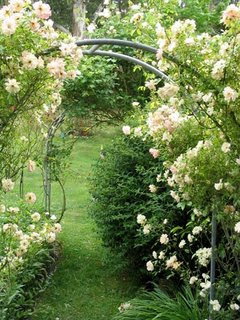Pottery is the oldest craft that man has pursued all around the world. It played a vital role in the evolution of civilizations. The potters kept this tradition alive for over 7,000 years. The earliest known pottery has on its surface a corded basket like design. In the development of the first human settlement pottery production played an essential part. The vessels enabled them to cook and store food and to keep liquid easily.The earliest fired clay was brought from Jericho, dating between 8000 and 7000BC. But the oldest known vessels were found on the Anatolian plateau (now Turkey), dating back 7000BC. The pottery was being made in Egypt and throughout the Near East around 5000BC at that time simple geometric patterns were used on the surface in coloured liquid clay called slip. In around 3000BC, the potter’s wheel was invented in the Near East which was in common use there 1000 years later. Egyptians invented the glaze in around 3500BC.Chinese pottery made in 3000BC was known for its artistic excellence and has set the world’s standard since ancient times. Chinese in the third century BC produced the glaze. Koreans introduced decorative style pottery. For the tea ceremony Japanese potters have devised their famous wares.During Cretan Bronze Age (2800 - 1100BC), the Minoan civilization, on Crete, made the first Aegean pottery. The Greek mostly used black and red colours in their pottery; they also invented orange, red and black slips, in the Attica region of Greece that style flourished from 1000BC to 400BC.In its technical and artistic excellence Islamic pottery is second only to the Chinese; influenced by European pottery, Muslims rediscovered the tin glaze technique in the 9th century which was used by Assyrians in 1100BC.Christian pottery history, from the Middle Ages, is well documented by the Muslims. By the 13th century, the technique of tin glaze had spread to Spain and Italy. The Italians discovered the technique known as majolica (elaborate decoration painted over plain white tin glaze), the French and Dutch developed faience and delft (variation of majolica). In the 14th century stone ware production began in Germany. In the 16th century Italy and France developed porcelain but in 1708 only Germany was making true European porcelain.Since the beginning of the Indus Valley civilization man has turned to clay for the fulfillment of self-expression. By virtue of unique methodology this art flourished in areas in close proximity to lakes and rivers. The ancient potters had to cater to the multifarious needs of the different segments of society — combining utility and aesthetics. They churned out vessels for various purposes, for common man and dolls and toys for children and decorative penal art pieces for worship place adornment and elite homes.In Pakistan the tradition of pottery incorporated two distinct trends, the pre-Islamic (around 5000BC) and Islamic (around 8th century AD) The discovery of the ancient cities of Moenjodaro and Harappa, that were the Hall mark of the Indus valley civilization (2500BC) are a significant landmark in history. During this time exquisite pieces of art were created by the artisans of this civilization. This pottery is well known as Hala pottery today.Pottery making has become a hobby that everyone enjoys at home. One can try simple projects at first. All you need for good pottery work is good quality clay. Tools are inexpensive; you’ll need a ruler, a knife, rolling pins, sponges, cutting wires, small paint brushes and modelling tools.Wedging clay (to squeeze and press the clay to remove trapped air bubbles for smooth texture) is an important process. One can make pots using the pinch method (this doesn’t require many tools), making slab pottery (suitable for contemporary pottery by forming clay slabs), coil pottery (formed by hand, one can produce a number of pieces). And after lots of practice and mastering the skills later one is able to make a pot on a potter’s wheel. So let’s see if you have what it takes to create beautiful pieces of art using simple clay.
Friday, February 29, 2008
Thursday, February 28, 2008
CREATE WORTH-SEEING GARDEN
It isn’t too hard if want to be a patron of worth-seeing garden. It’s a passion. Woven together colors and textures to create a garden, it gives a thing ---- people admiration. By following these points, you would be able to turn dream garden design into reality.
* Observe wind direction, areas of light and shade.
* Guiding principle in designing garden is to create a harmonious whole with the house and its surrounding.
* Paint garden furniture in dark colors to show plants ----- especially green foliage.
* Pick a shady area to place chairs, pots and sculptures.
* Group together different plants of one colors.
* Use several plants of same species and thread them through each bed to give continuity and movement to overall composition.
* Use a palette of different tones of one color.
* Tall grasses are wonderful for their movement and the way they catch evening light.
* Prune bushes to eight or ten inches, it encourages good growth and larger blooms.
* Rotate your fertilizers. Use a combination of chemical and organic.
Subscribe to:
Comments (Atom)



